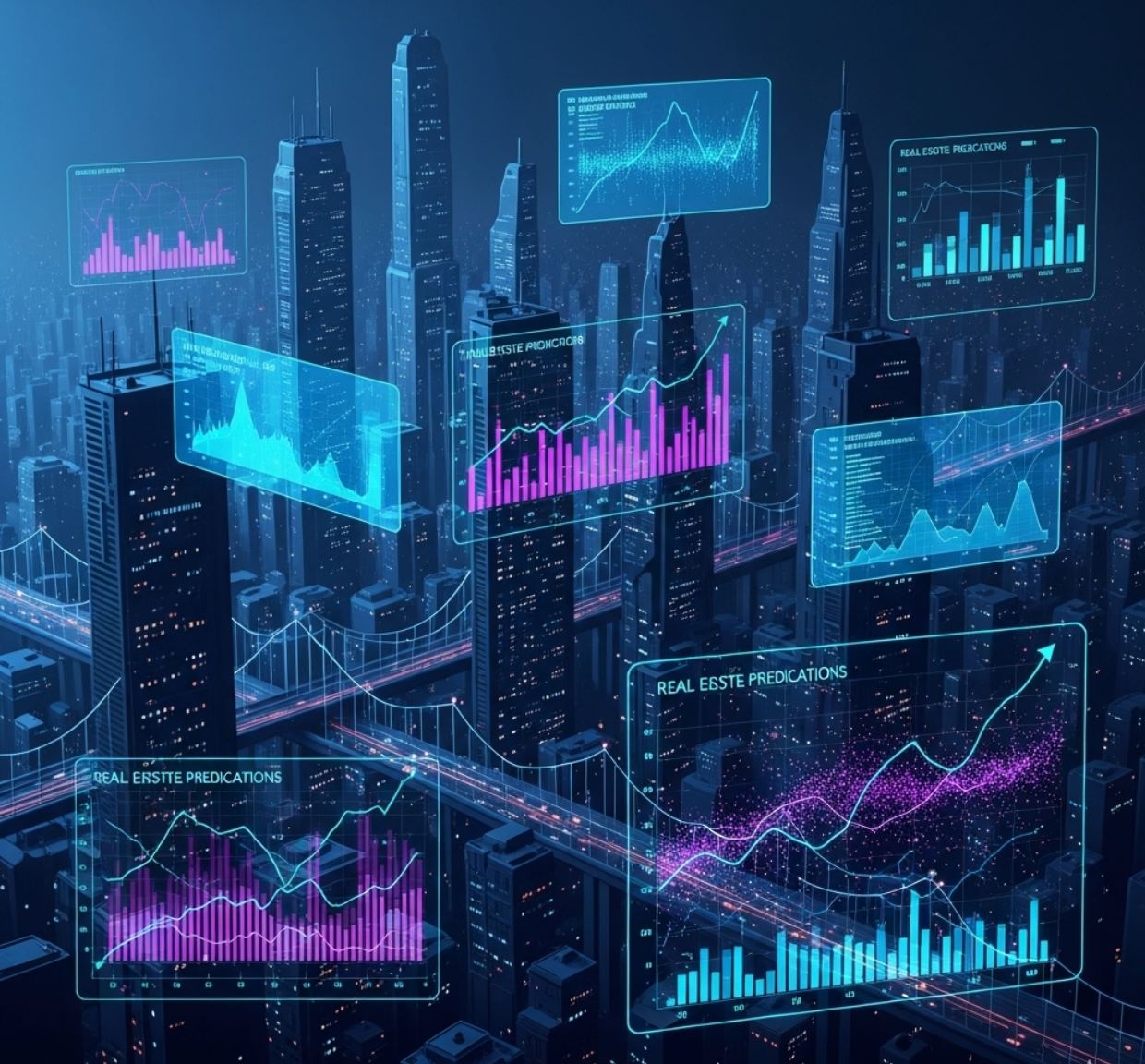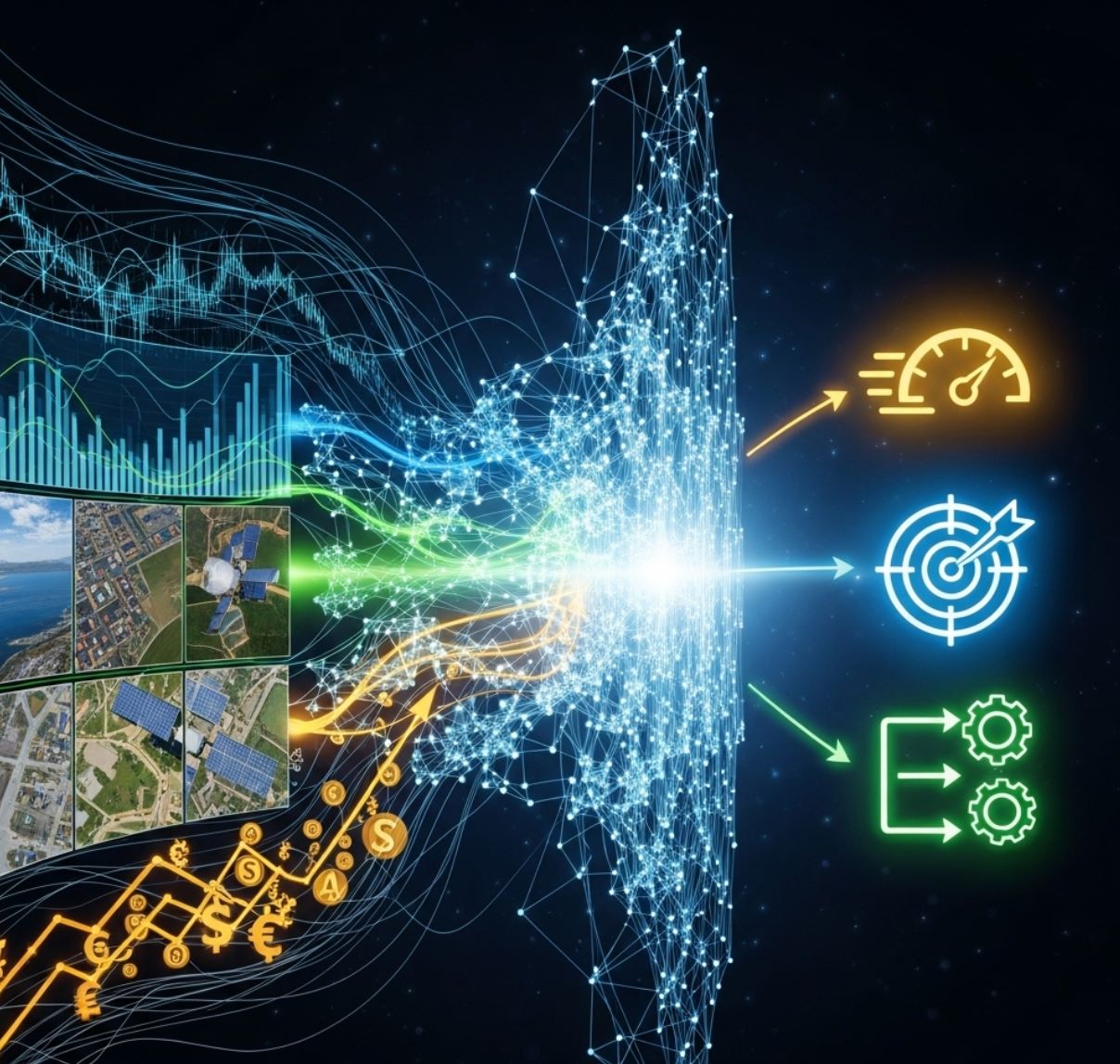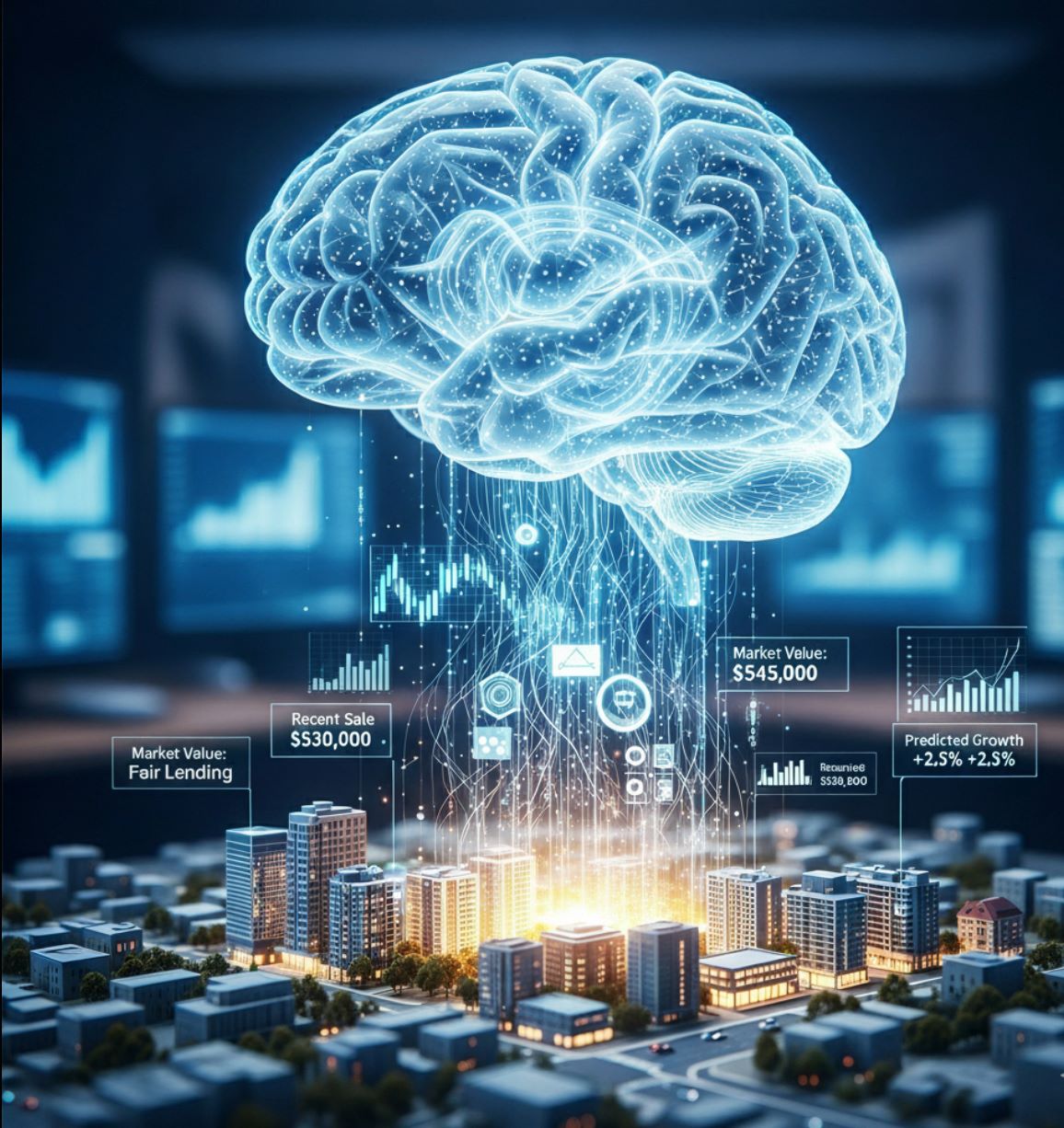AI predicts real estate price trends
“AI is reshaping real estate forecasting by combining big data and predictive analytics to deliver faster, more accurate, and more transparent insights for investors, agents, and buyers.”
Artificial intelligence (AI) is transforming how experts forecast real estate markets. Today's AI tools use predictive analytics – mining historical sales data, economic indicators, and even social-media sentiment – to forecast price trends with unprecedented accuracy and speed.
AI-driven predictive models can "analyze market conditions, evaluate property values, and identify investment opportunities" to forecast trends and make accurate predictions.
— National Association of REALTORS®
In short, AI is poised to help investors, agents and buyers anticipate where and how fast home prices will change, revolutionizing decision-making across the entire real estate ecosystem.
How AI Predicts Price Trends
AI forecasting models learn from massive datasets to spot price patterns that would be impossible for humans to detect manually. Typically, a model is trained on historical home sales and housing indices together with features like location, size, and age.
It may also include macro data – interest rates, inflation and local job growth – and unstructured inputs like text in property listings or satellite imagery for comprehensive market analysis.
Leading AI use-cases include "price modeling and prediction" and even processing "satellite image" data for valuation.
— JLL Research
In practice, a real-estate AI might take dozens of inputs (past prices, crime stats, school quality, etc.), use algorithms such as regression models, decision forests or neural networks, and output a forecast of future price levels or neighborhood trends.
Key Data Sources for AI Forecasting
Historical Sales & Valuations
Economic Indicators
Location & Demographics
Geospatial & Imagery
Market Signals
For example, they might detect that rising employment in a city could signal faster home-price growth there, or that an oversupply of listings in another region may predict a future price slowdown.

AI Use Cases in Price Forecasting
Automated Valuation Models (AVMs)
Platforms like Zillow's Zestimate use AI to instantly estimate home values. Zillow reports that its AI-driven AVM is "at the core" of helping 200+ million monthly users see estimated property values.
Similarly, real-estate portals (Redfin, Realtor.com) offer ML-based pricing estimates that update in real time, providing consumers with immediate market insights.
Market Forecast Platforms
Companies such as HouseCanary, CoreLogic and Moody's Analytics (CommercialEdge) publish AI-enhanced market reports. For example, HouseCanary's Q3 2025 forecast used its AI models to project U.S. single-family home prices up ~3% year-over-year, while highlighting that some regions are cooling.
These tools let investors and developers track where prices are likely headed with data-driven precision.
Investment & Risk Analysis
Institutional investors use AI to pick up-and-coming neighborhoods. An AI might scan city-wide data to flag areas with rising rents or under-priced assets, informing buy/sell decisions.
Property lenders also run AI credit models that factor in future price expectations for mortgage risk assessment.
Additional Applications
- Commercial & Urban Planning: In the commercial real estate (CRE) sector, AI models forecast demand for office or retail space by analyzing economic trends and regional data. Urban planners use AI forecasts (coupled with satellite imagery) to predict how infrastructure projects will affect local values.
- Global and Regional Tools: AI forecasting is international. For example, Chinese PropTech firms leverage massive domestic property databases to predict local condo prices, while some European banks use AI models to adjust loan pricing based on forecasted home appreciation.

Benefits of AI-Driven Forecasting
AI-based price prediction offers several advantages over traditional methods, revolutionizing how real estate professionals and consumers make decisions:
Speed and Scale
AI models can process millions of data points in seconds. This means platforms can instantly update price forecasts across thousands of ZIP codes or neighborhoods, far faster than manual analysis.
Data Depth
AI can integrate non-traditional data (street images, social media, IoT sensors) that humans might overlook. For instance, analyzing Google Street View images can help the model infer neighborhood quality, which improves price accuracy.
Objectivity
Machine learning uses historical patterns and current data to make predictions, which helps reduce human bias. AI valuations can be "unbiased" and consistent, enhancing trust in pricing models.
Improved Decision-Making
Real-time forecasts help agents and investors move quickly. If an AI flags a metro area's prices are about to rise, developers might accelerate projects there; if AI predicts a decline, homeowners may wait to sell.
In practical terms, that means AI can free up agents and analysts to focus on strategy and clients rather than spreadsheets, while generating approximately $34 billion in industry savings.

Challenges and Considerations
Despite the promise, AI forecasting has limitations and must be used carefully. Understanding these challenges is crucial for responsible implementation:
Data Quality & Bias
Machine learning is only as good as its data. Historical real estate data can embed biases (e.g. under-reported sales in some areas).
Inaccurate or incomplete data (such as missing sales records) can skew predictions significantly.
Complexity of Markets
Housing markets depend on politics, interest rates, and human behaviors that can change abruptly. AI models trained on past trends may miss unexpected shifts (e.g. a sudden tax law change or a pandemic).
Models must be constantly updated and validated to remain accurate in dynamic market conditions.
Human Oversight Needed
The machine can process data and identify patterns, but it takes a human to understand the broader context.
— CBRE
AI gives signals, but experienced analysts should interpret them. Local knowledge (e.g. news of a new tech campus) may be crucial to validate an AI's output.
Regulatory and Ethical Issues
Increasingly, regulators scrutinize AI in finance and housing. Issues like privacy (using personal data), fairness (avoid disadvantaging certain groups), and transparency (explaining how an AI arrives at a forecast) are all emerging concerns.
The industry must watch evolving standards to ensure AI is used responsibly and complies with regulations.
Overfitting & Uncertainty
A risk of complex AI models is overfitting (finding patterns that were just random). If an AI overfits to past data, its future forecasts may be off.
Developers mitigate this with techniques like cross-validation, but uncertainty always remains in predictive modeling.

The Future of AI in Real Estate
AI-driven forecasting will only grow more powerful as technology advances and data sources expand. Future models may combine generative AI and agent-based systems to simulate market scenarios ("what if interest rates rise by 1%?") in natural language.
Integration with smart-city sensors and blockchain property registries could provide real-time market signals, creating an even more responsive and accurate forecasting ecosystem.
Emerging Technologies
AI Agents
Autonomous systems that plan, adapt, and learn
Personalized Bots
Investment bots that adjust portfolios based on predicted trends
Smart Integration
Real-time data from IoT sensors and blockchain registries

Conclusion
When used wisely, AI price forecasting can give buyers, sellers and investors a sharper view of where the market is headed, helping them make better-timed and better-informed decisions. The technology represents a fundamental shift in how real estate markets are analyzed and understood.




